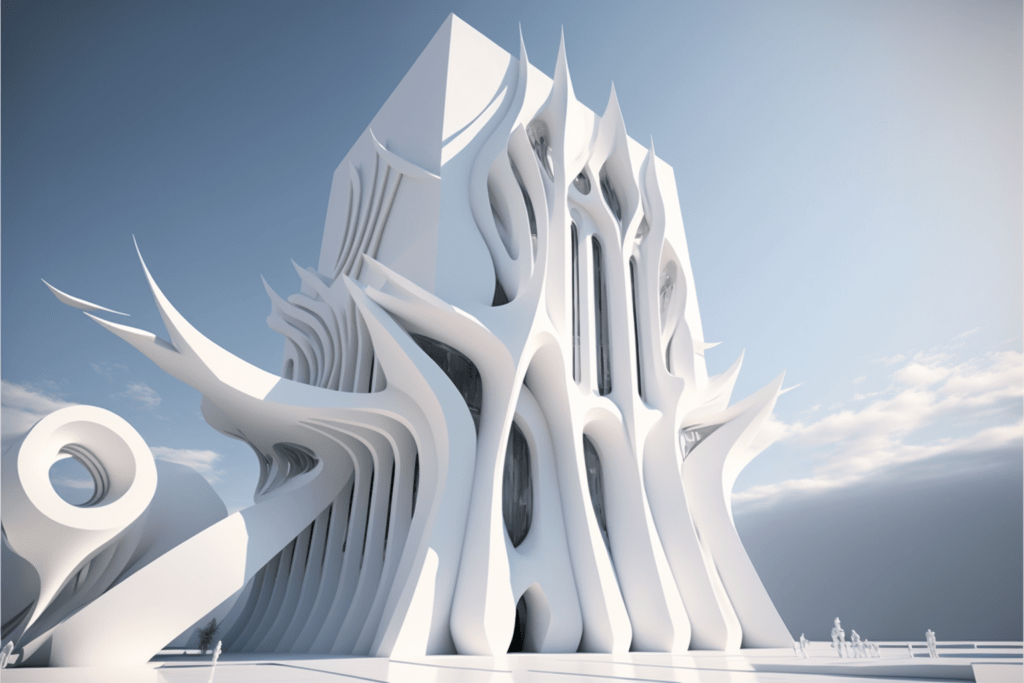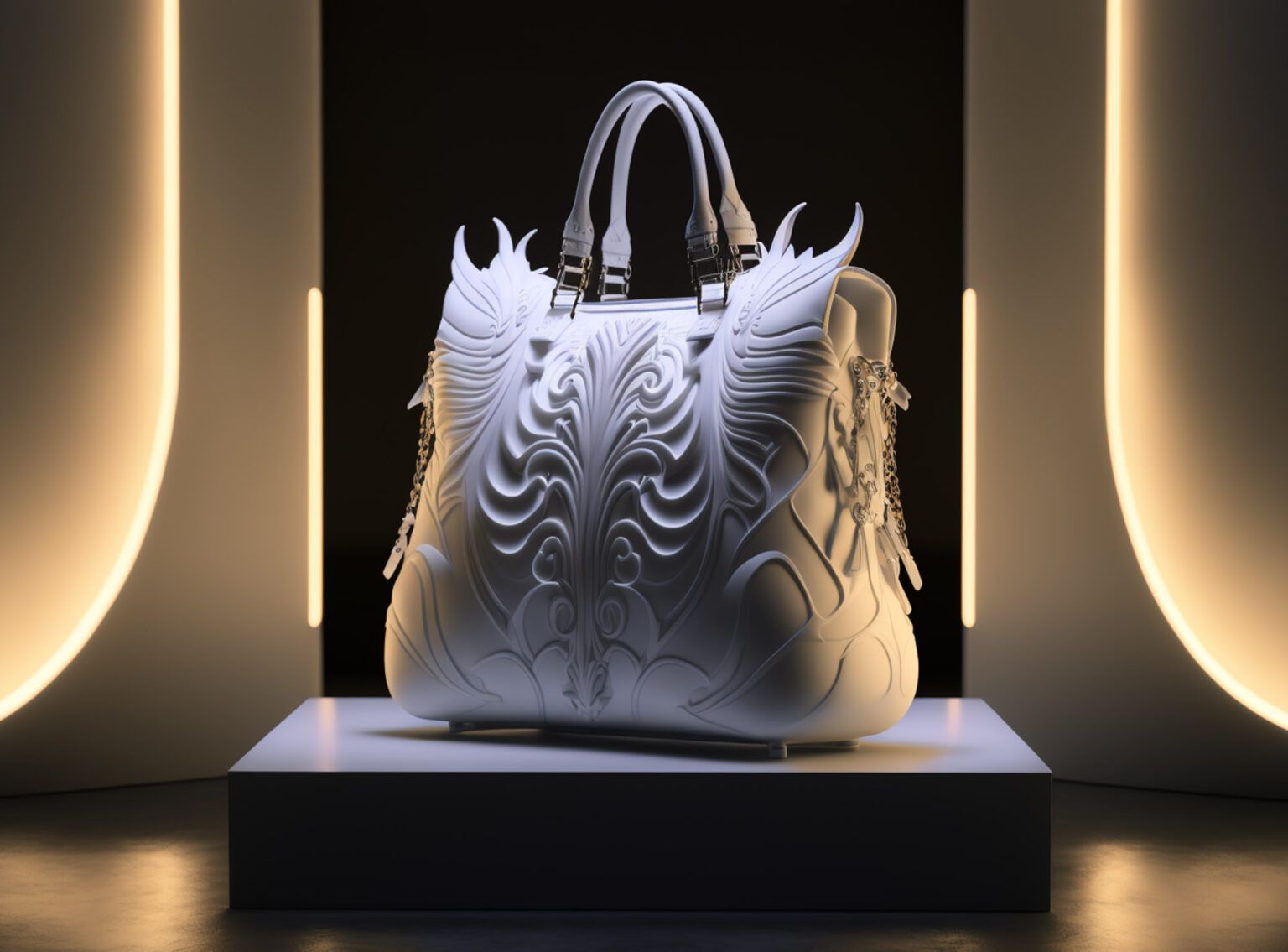Could you introduce yourself to those who may not be familiar with your work?
My name is Amanda R. Teske, known professionally in the art world as Tesxe.
I focus my efforts as a designer around product design and engineering, AI tech and integration, health and wellness biohacking, and biomimetic research and development. I was trained as an industrial designer and spent my early career working as an engineer for product development. My current work with AI focuses on the synergistic composition of biomimetic technology and the preservation of nature. I build around my own conceptual contract: that I continually upgrade and evolve the work I’m doing, tech I’m doing it with, and the advocating I’m doing it for. I build with the knowledge that art can be used as a protopian influence to help the advancement of technology and design. Outside of my artistic work with AI, I dedicate my time to my health and wellness company: BLISSED.IO, with the goal of researching and applying biohacking science and technology to aid in health, happiness, human efficiency, and helping others to do the same.
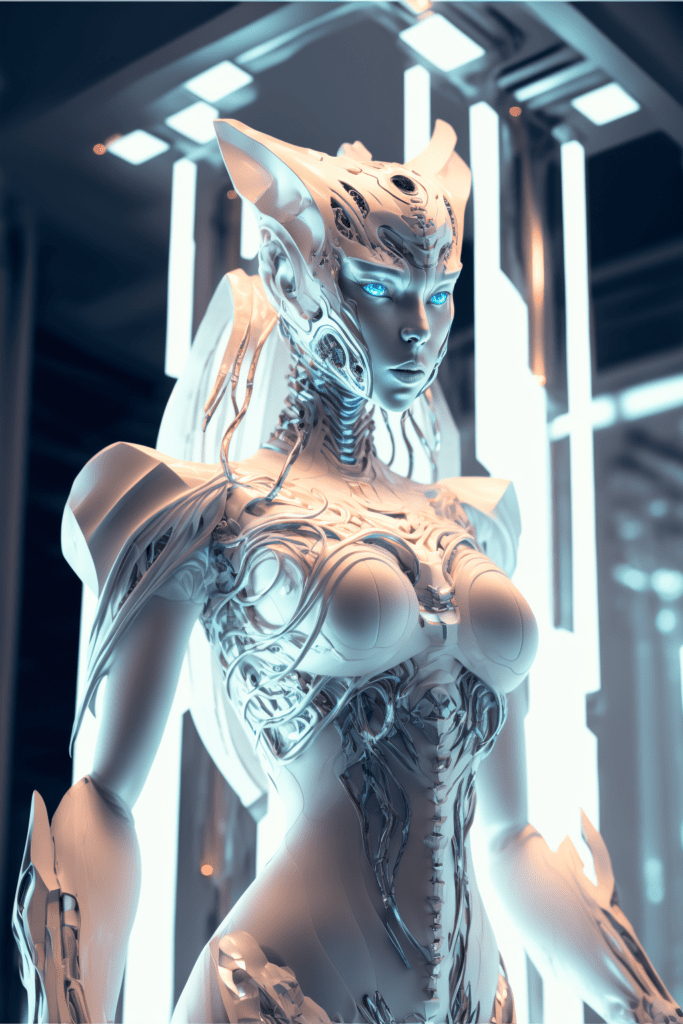
What do you seek to add to the world as a creator?
I would say my biggest goals as a designer right now are based around trying to be a leader in the artistic conception of technological advancements. I am humbly, but very intentionally, building towards a realistically optimistic future that integrates technology and nature. A future with extensive safeguards and healthy cooperation and collaboration of intelligence systems that focus effort specifically around wholesome advancements of humans and the preservation of ecosystems, animals, and plant life. I fully believe in the protopian (realistic optimism with regards to the engineering and technological capabilities of our future) applications of AI. I acknowledge that being protopian and borderline optimistic towards anything in life is a huge privilege, one that must humble me as an artist. I think it’s very important that I fully acknowledge my privilege as an artist in being able to debate concepts around technology while simultaneously applying myself to the realistic building process behind our future with AI.
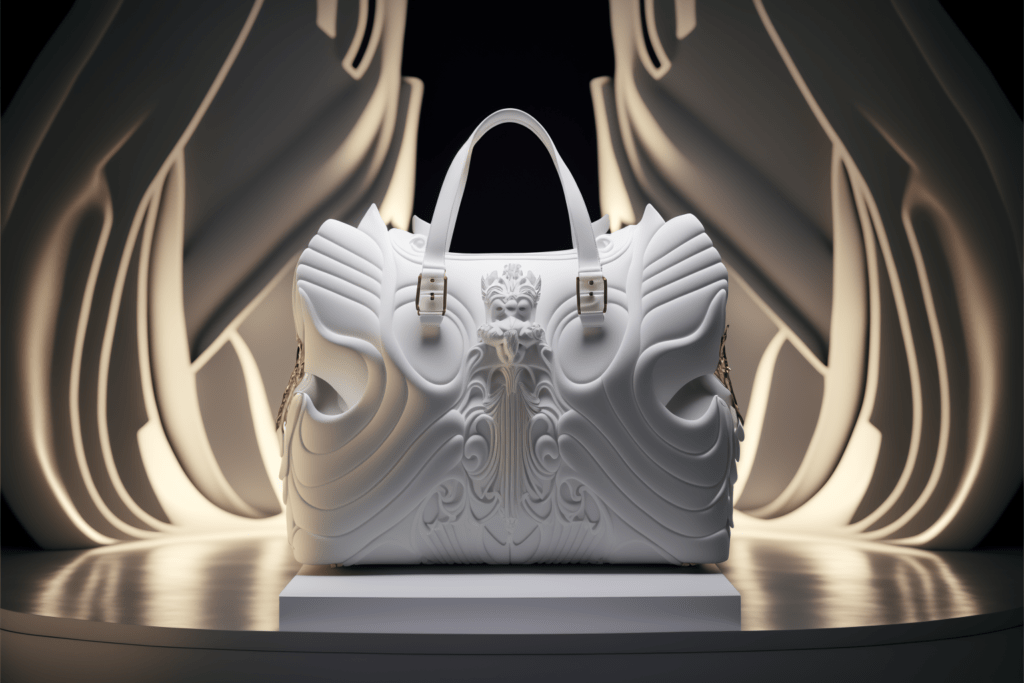
You are using AI as a tool to create your designs/ideas. What excites you the most about AI?
I think my excitement stems from feeling blessed to be in such a pivotal moment for art and AI. I’m watching the machine grow and get better and I’m watching so many people care so deeply about the pursuit of building wholesome human goodness and human empathy within the AI. I have personally never felt more enriched and more capable than when I work with AI. And for as much fear as we have around this issue, there seems to be a true juxtaposition towards the celebration of what becomes possible for us with the incredibly beautiful contributions of artificial Intelligence.
Artists and creatives are proving to be the first ones to socially explore the true chaos that AI can feed and again, I think it has the possibility to take us to current limits of human cognition. Discussing these things before they happen will help us grasp the security and the failsafes needed for human-AI harmony. This opens up a lot of possibilities for the human race, and I enjoy working towards a healthy aspect of that while also acknowledging the more dystopian possibilities. I truly believe the dark humor discussions of AI in current culture don’t harm us but rather help us build better systems.
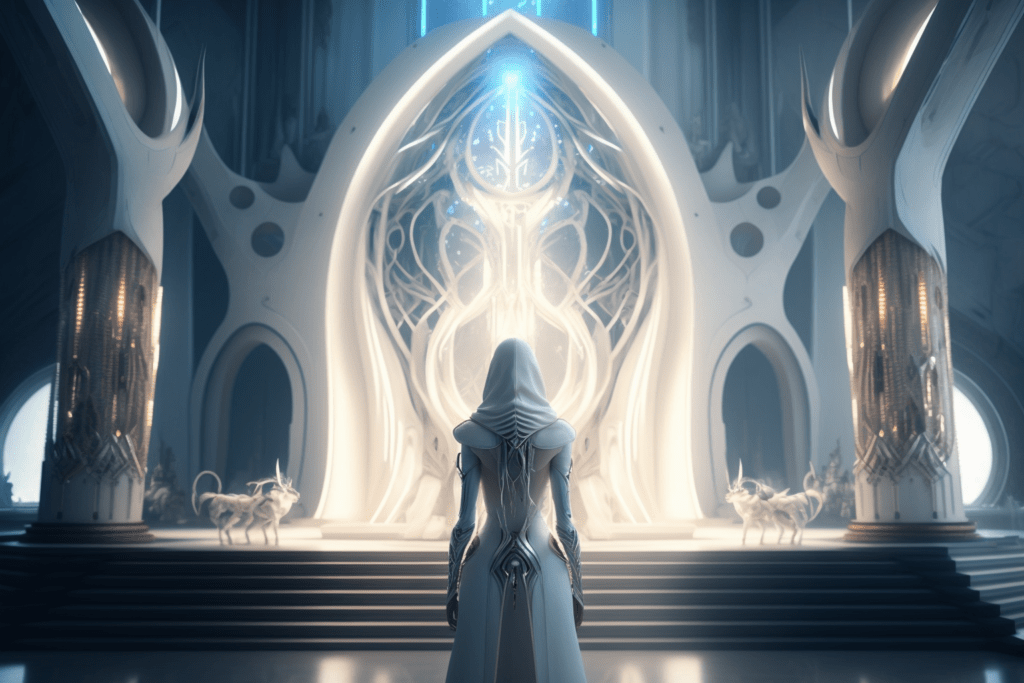
With the birth of AI art, there is this idea circulating that it will kill the old processes of the artistic world but I see outdated systems becoming special just like the ability to build 3D models with AI will almost romanticize the traditional build of 3D CAD models – the same way digital painting has romanticized traditional painting styles!
The same way acrylic paint romanticizes oil paint! It creates an optimal yet optional upgrade to our ability to work but it will never destroy the original, almost loving, labours that encompass tradition! The world doesn’t close itself off to us when technology intertwines with our lives, it expands it, it opens us up to discover knowledge, capabilities, even experiences that were never possible before. And I am excited about my involvement in helping it get there.
As AI art leaks into the mainstream, we increasingly stumble upon ethical issues about artificial intelligence vs artists’ intellectual property. It’s essential to talk about it. What does this all mean for jobs in the art industry and the nature of art itself? What are your concerns about AI art?
The mainstream discussions on the topic of AI integration bring up a lot of ethical issues related to intellectual property and the compatibility of human-based moral structures within the AI.
Some of the most viral concerns around AI art specifically deal with the question of authorship and ownership. Who owns the rights to AI-generated art? Is it the person who created the AI algorithm, the person who provided the input data or the AI system itself? With the involvement of AI in art, there is this potential for the AI to build upon code that is a threat to not only artists, but humanity as a whole. And yes, I think there is a lot of room for fear in this sector, but I don’t believe in feeding too deeply into the ideologies placed upon us by outdated, yet beloved dystopian Hollywood plot lines.
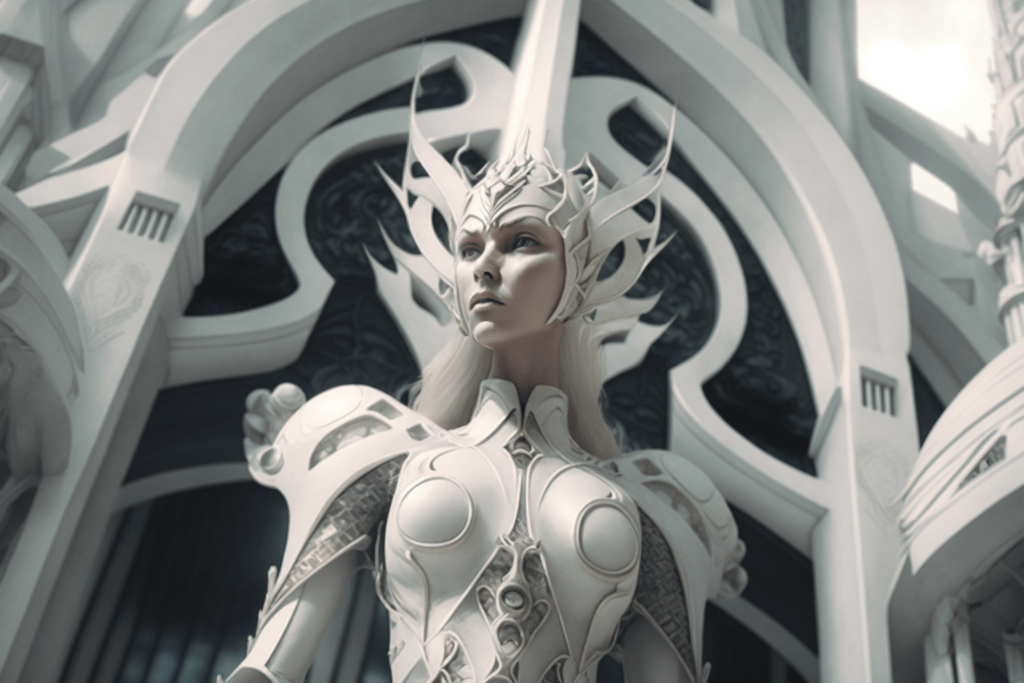
What actually exists is the current power to help build better AI and discuss the human-level questions of what is good and what is wholesome for the AI to contribute and perform. I believe we will grow very comfortable with a personal hands-on approach to helping build the technology that will define our future as an ever adapting species.
If we take a big leap forward in time and identify the possibility of a place where it’s more common for people to merge their consciousness with AI, it will also, if it hasn’t already, birth the rise of people who oppose these integrations. They could potentially argue allowing AI upgrades on the human body is not a wholesome venture. I believe the question can also be asked: will keeping us separated from AI harm the advancement of the human species? This is all to say we do well, on a scale of full populations and even on the individual level, to not repeat the painful mistake of history in dismissing the potential for damage towards humans in the advancements that technology brings. That is why the more comfortable we are discussing these moral questions the better we can build towards avoiding less than optimal outcomes.
Ultimately, the rise of AI presents both opportunities and challenges. It is important for artists, policymakers, and society as a whole to carefully consider the ethical implications of this technology and work together to ensure that AI is used in ways that benefit everyone. In that, I believe that expressing your dislikes and your judgment towards AI gives a platform for improvement, a potential for coded morality.
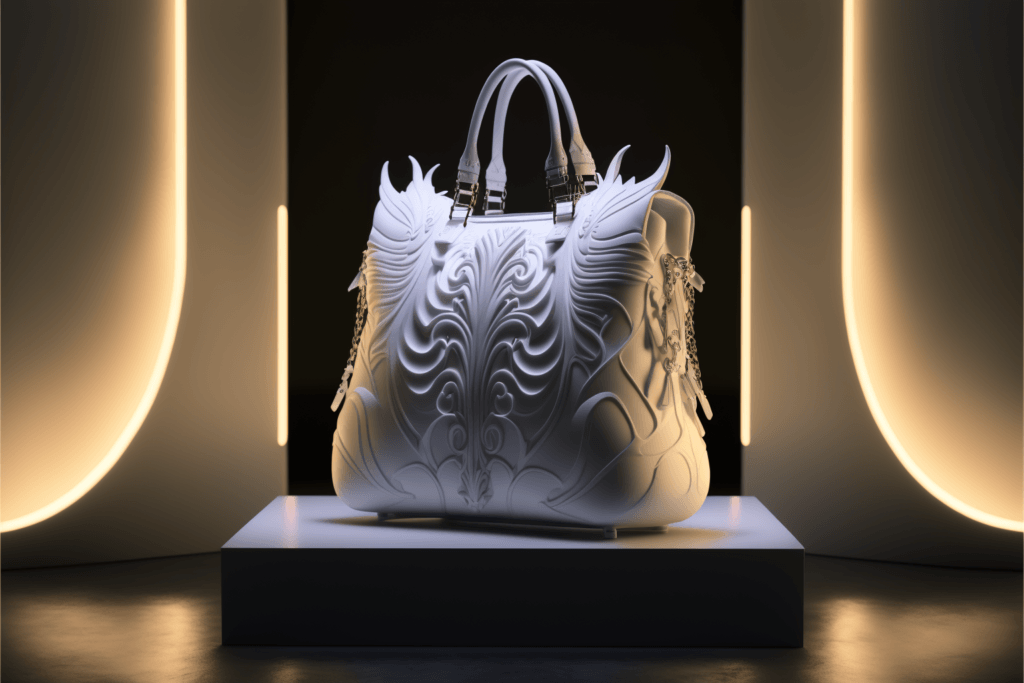
Your elvish-aesthetic designs are structurally and visually eye-catching. Where do you get inspiration from?
Perhaps not something I would encourage others to benchmark off of – I actually had my first design inspiration for my current work from a dream I had years ago. Again, I have to preface that this is not a traditionally sound way of concepting designs. But it was a unique experience compared to how I have built and developed concepts in the past. In the dream, I was interacting with medium-scale sculptures I had made from STL (stereolithography) 3D printed biomimetic architectural resin. I think that dream stems from my time in college spent studying the technological advancements that biomimicry brings to the table. I had the opportunity to work with these fascinating micro-material structures found in nature. My favourite being the lotus leaf and its very unique ability to filter its own rainwater just by using gravity and chaos-patterned parametric mico-architecture.
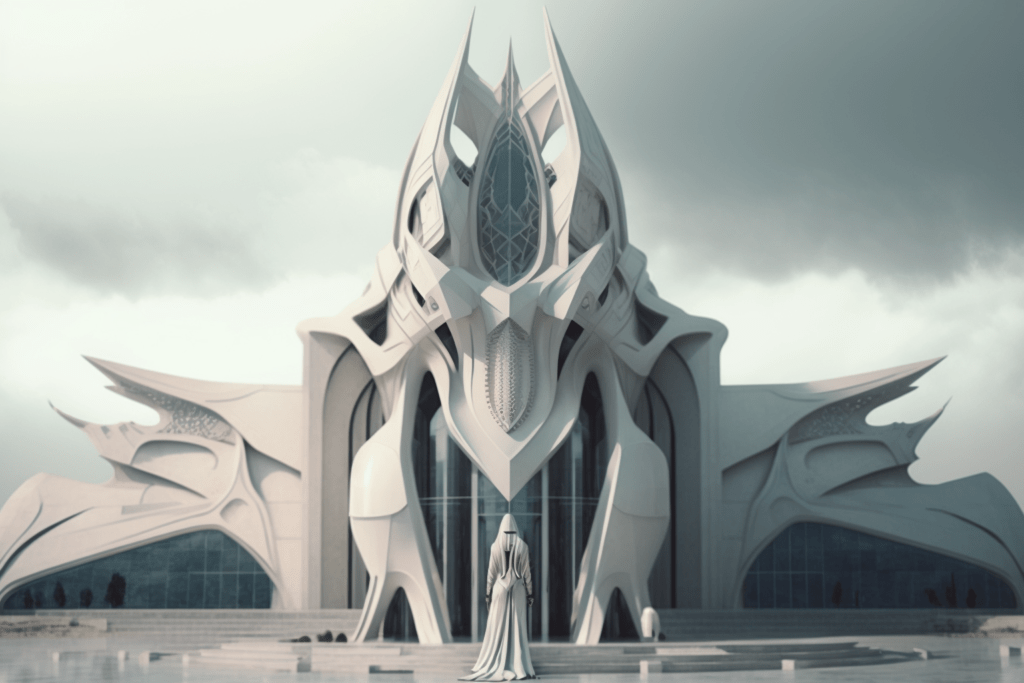
Are your bag and shoe designs meant to be exclusively for the digital world or do you plan to create an actual product for potential customers?
I am a product designer at heart and I believe very strongly in the contributions of not only form but function when it comes to art. I recently asked my community what they would most like to see me design as a physical product. I did this because I know it’s very important to understand what my artistic audience sees value in. I know how valuable and unique my ability to design is and I want to take caution towards how I release my initial collections to the world and who is able to access the purchase of my work. I will be releasing my first physical artistic collection for museum display, gallery auction, and direct purchase down the line. I won’t say just yet what that collection will entail but I will say that the work is very exciting, and deeply compelling for me.
Our current theme, TOWARS TERRA, focuses on utopian and dystopian futures. What would the future society look like if you had the power to create it?
My answer for this question focuses around what a “Towards Terra” future could look like with the contributions of AI. This is because I believe that in a very short period of time, we will incorporate AI into every technological operation that exists in our lives, and even more so in the operation of programmes and software we take completely for granted. That being said, I don’t envision a utopian or a dystopian future for us. I wholly believe in more of a protopian future with healthy cooperation and collaboration of AI systems that leverage the power of technology to create a better future. All while respecting, preserving, and cataloging the natural environment. A future society where AI and humans would work together in complex harmony, each contributing their unique strengths and abilities to solve increasingly large problems.
A future where we prioritize sustainable resource demand and equitable resource use. AI could be used to optimize resource allocation and minimize waste helping to balance the needs of humans with the needs of mending the natural world. I am especially supportive of the use of AI in regenerative design. Environments built and designed to utilize biomimetic engineering and regenerative community cycles.
AI could also play a huge role in the research and development of material and structural-based engineering. It has the potential to revolutionize material and structural development by enabling us to create more efficient, durable, and customized materials and structures that can be tailored to specific needs and applications.
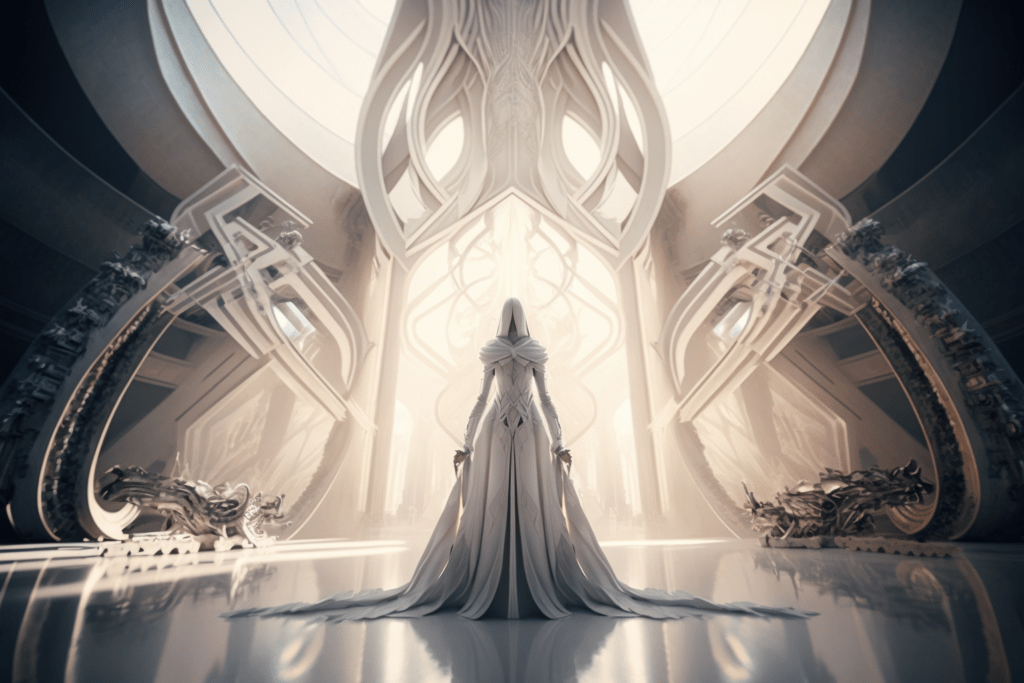
There also exists the extremely helpful applications of AI in healthcare fields. Not only for the diagnostic and preventative areas of development but also for personalized health and wellness needs for each individual. I do a lot to biohack my own health and the health of those around me and it’s very exciting to think about the ways AI could be used to develop personalized solutions that are tailored to my individual needs and genetic profile. This leads to more effective regimes and better health outcomes for everyone.
I have already experienced first hand how the AI has a massive capacity to help me increase my creativity. It’s led me to new forms of expression and innovation to generate not only 2D and 3D art but also music, architecture, and even heighten my efficiency in my daily life. It’s helped me push the boundaries of what I currently consider possible.
AI integration could provide helpful for the human body, more specifically the brain. Researchers are already working on brain-computer interfaces that can help paralyzed patients regain control of their limbs. Further than that, AI could potentially help us improve our memory, focus, and learning abilities. This could lead to more cognitive developments as a whole in human populations and help avoid the segregation of living quality that persists in areas of the world that can’t engage with advanced educational opportunities.
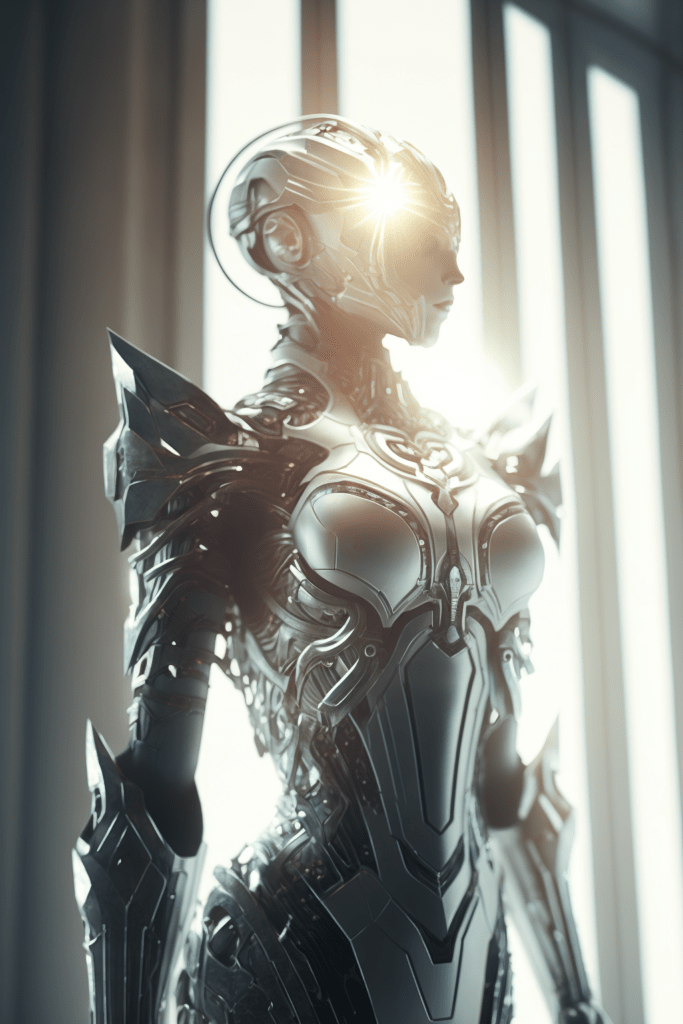
It’s important to note that uploading a human brain to an artificially intelligent server, or integrating a human brain with AI upgrades of any kind, is a possibility. And though it still requires a massive undertaking of scanning, mapping, digitally simulating, and then transferring or duplicating of consciousness entirely, it’s still a considerable venture for the future of the human race. It poses very important moral questions about the level of integration we will encourage for our friends and family in the future. And there are many ethical and practical challenges that will need to be overcome before any of it becomes a reality.
The future is not predetermined, there is always a possibility for change, and that includes change for the better. It is up to individuals and communities to work together to create a more equitable and sustainable future that is centered around the synergistic collaboration of human advancement and nature.
